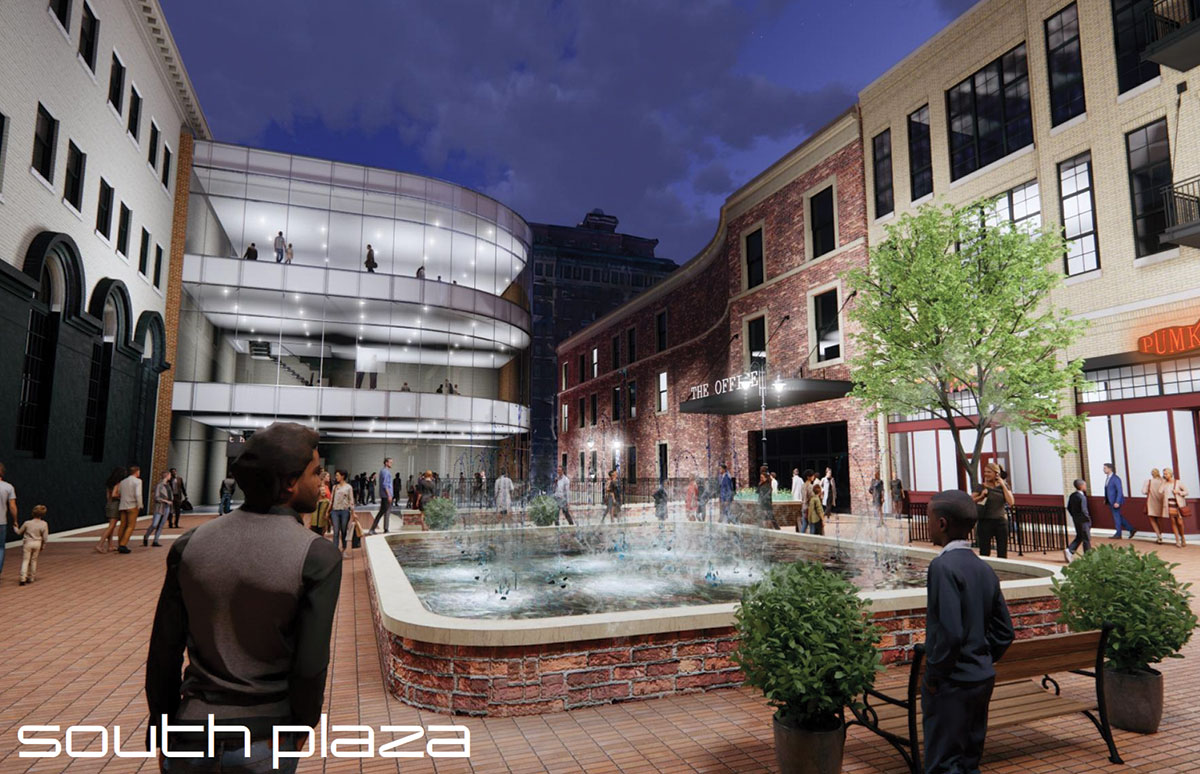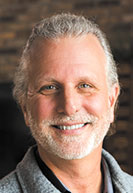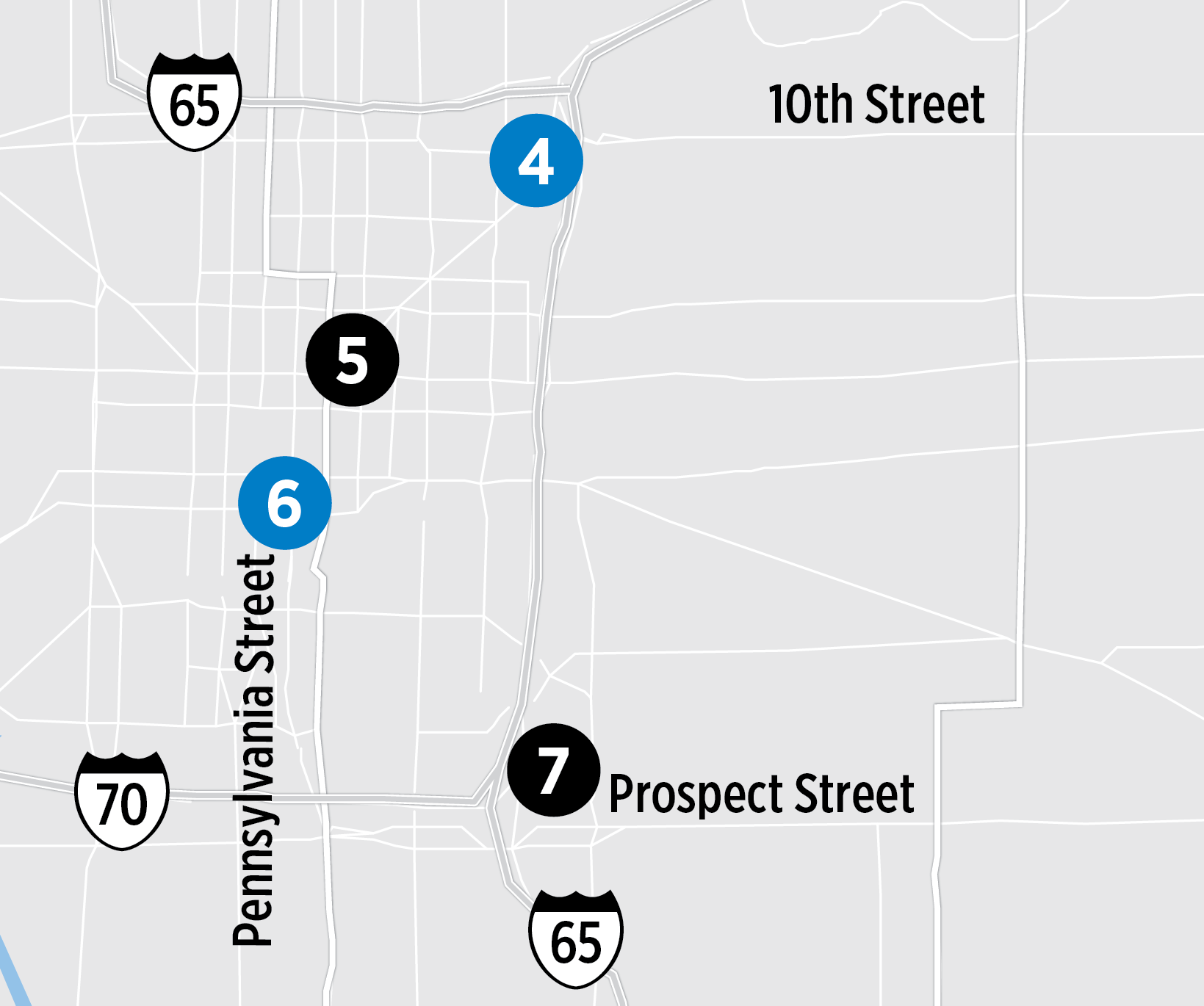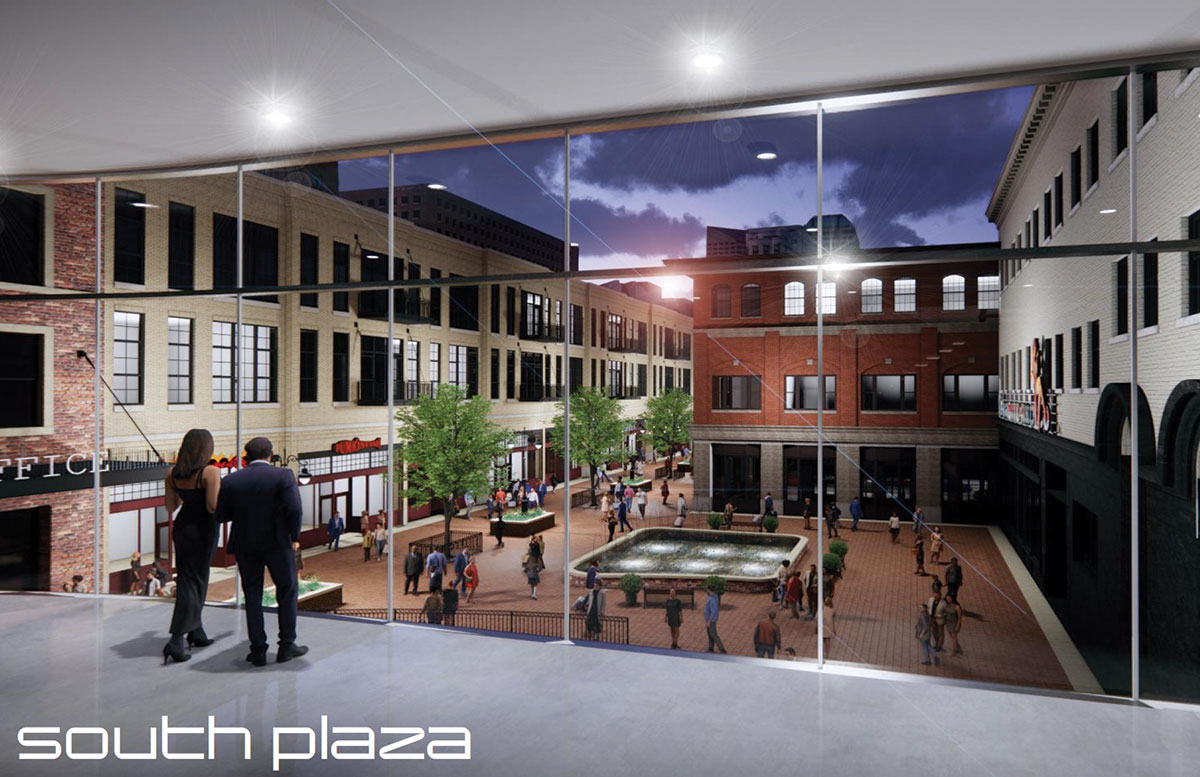Subscriber Benefit
As a subscriber you can listen to articles at work, in the car, or while you work out. Subscribe Now
Hendricks Commercial Properties has spent more than $550 million to acquire and redevelop properties across Indianapolis and Carmel since 2013. But with a major redevelopment of Circle Centre Mall on the horizon, the Beloit, Wisconsin-based firm’s leaders say they’re just getting started with work they hope to do in central Indiana.
The privately held developer wants to parlay its success on projects like the lauded Ironworks apartments and hotel near Keystone at the Crossing and the ongoing Bottleworks District on Massachusetts Avenue into more development opportunities here.
In fact, it was the goodwill Hendricks established with local leaders during its more than a decade in the city that led to the $600 million redevelopment it’s now tackling for the aging Circle Centre. The project is expected to be one of the city’s largest in the next five years—and one of downtown’s most transformative.

Hendricks announced in December that it was in talks to acquire Circle Centre from the mall’s longtime ownership group, Circle Centre Development Co., and had a three-party deal with the city and the Indiana Economic Development Corp. to overhaul the property.
While neither deal is finalized, Hendricks CEO Rob Gerbitz told IBJ the closing on the mall property should happen in April or early May and the public-private partnership agreement involving the former L.S. Ayres department store space, garages and a litany of incentives should be completed at about the same time.
“We’re actually now fully into the final stages of the due diligence,” Gerbitz said. “We’re really looking at the next few weeks to 30 to 45 days to execute. We want to close as quickly as we can.”
Hendricks has already secured financing for its mall acquisition at what Gerbitz said is a “solid” interest rate; he declined to disclose how much Hendricks is paying for the property.

A big undertaking
The Circle Centre plans call for essentially turning the venue into an open-air shopping center with an elevated outdoor central artery flanked on each side by a dozen four-story buildings with a mix of residential, parking, entertainment, retail and office.
The outdoor spaces would replace the mall’s main hallway and a series of covered skywalks that now connect the property’s buildings with other parts of downtown. It would be a shift for the two-block space, particularly when it comes to how the city markets itself to conventions and events looking for space during cold-weather months.
Hendricks tentatively plans to put $100 million into a first phase of the redevelopment, to be completed by 2028, with the remainder of the investment coming in through 2033. The first phase is expected to focus on the southern block—bordered by Illinois, Meridian, Georgia and Maryland streets—but Gerbitz has said that could shift depending on interest in the northern block’s L.S. Ayres building, which was most recently home to Carson’s.
Gerbitz said the company has to be “flexible” with its vision but expects the open-air nature of the project to be retained. He added that the property will remain a year-round destination, with the firm looking for creative ways to help shield visitors from inclement weather.
“We’ve been working this in complete parallel with the city, the state, everybody … and it’s been awesome,” he said. “That’s one of the things I like about working in Indianapolis, because we’re all trying to get to a common goal. That doesn’t mean everyone just says, ‘OK, do whatever you want to do,’ or anything like that. That’s definitely not the case. But we work together to get to the end result, and we’re right on pace.”
City and state officials approached Hendricks in mid-2022 about making a pitch for the mall property. Hendricks has spent the past two years fine-tuning its yet-to-be-named concept and working on separate agreements with Circle Centre Development Co. and the city and state.
A nonbinding agreement that Hendricks reached with the city and state in July didn’t include a purchase price for the city-owned properties, including the L.S. Ayres building and a pair of parking garages. That’s still being negotiated. But the agreement outlined likely city and state incentives for the project, including at least $64 million in tax credits and more than $24 million in partially forgivable loans.
The mall is also part of a $75 million application for Regional Economic Acceleration and Development Initiative funds submitted this year by the Central Indiana Regional Development Authority. The application put the mall in a category for projects of more than $10 million and also submitted it as one of the city’s priority projects for funding from the Lilly Endowment, which has pledged to match state READI grants.
Gerbitz declined to specify how much the region sought for the mall project because the money has not been awarded.

Building goodwill
Hendricks’ first Indianapolis project, the $30 million Ironworks apartment project on the north side that opened in 2015, is now part of a larger Hendricks development that includes a hotel and more than a dozen retailers and restaurants. That experience played a big role in positioning the company as a serious player here, observers and insiders told IBJ.
And at Bottleworks, Hendricks has invested more than $400 million in its first two phases. That’s $100 million more than the company planned to invest in a total of four phases.

“When you experience what they’re doing, like Ironworks and Bottleworks, it makes a big impression, which is that they really put a lot of effort into the design and the quality of their developments,” said Doug Morris McCoy, the Al and Shary Oak director of real estate at Indiana University.
“They have a long-term perspective, and the proof is in the pudding, right? They’re not a ‘Get in, get out, build it for as little as you can, then sell it’ type of company, which is the sort of thing that communities fear” from out-of-state groups.
So far, Hendricks has not sold a single Indiana holding, Gerbitz said. And while the company does have some local properties that could, he said, fall more under the category of “merchant” real estate, where the company makes renovations and eventually sells, its major holdings here are squarely outside that category.
“These kinds of investments—like a Bottleworks, Ironworks and Circle Centre—you cannot have a short-term vision for it, because it’ll never work,” Gerbitz said. “First of all, it’s too damn hard to build. Building stuff today is really, really hard, and it takes time.”
He said the company’s vision for the quality it expects to develop in its major projects requires it to “be a little bit more patient and take our time to get things done,” he said. “Everyone always likes the buildings when they’re done, but sometimes when you go through the process, it’s a challenge.”
Hendricks was founded in 2000 by Diane Hendricks and her late husband, Ken. The pair started ABC Supply, a national roofing, siding and window company, in 1982 and parlayed success there into real estate investments and redevelopment projects.
Hendricks is one of the richest women in the United States, according to Forbes magazine, with an estimated net worth of $15 billion as of last June. She is also a Republican mega-donor, although city officials told IBJ party politics have never prevented a Hendricks-backed project from getting done in Indianapolis.
“If a city called and asked for a character reference, I would say: … ‘The smartest move you make would be to take their call and work with them,’” said Dan Parker, chief of staff and deputy mayor for Indianapolis Mayor Joe Hogsett. “I’m not saying that Bottleworks has been easy, but I think the way it’s worked out since the beginning, with them delivering the results that they said they would, that’s critically important.”
Gerbitz said Hendricks’ focus is solely on rehabilitating and reenergizing dilapidated buildings and properties that present opportunities for investment. That kind of work is not political, he said.
“Diane and I love old buildings and those that have been brought to life again,” Gerbitz said. “In some cases, we’re re-creating a building that was there 100 years ago, at least on the façade portion. As a company, we want to honor history, and there’s something powerful [in] that for us.”
The tack is one Hendricks took with the development of its first two phases of Bottleworks, attending numerous Indianapolis Historic Preservation Commission meetings and hosting community input sessions to ensure the property respected the history of the former Coca-Cola Bottling Plant, at one time the largest bottling plant in the world.
He said the Circle Centre project will have a similar aim, with plans to reconstruct historic facades along Washington Street that reflect older low-rise buildings that were in place before the mall was completed in 1995.
“This is part of our DNA and how we look at things,” he said.

Focused on details
Catherine Esselman, founder of Indianapolis-based real estate firm Cat Consulting LLC and former real estate development director for Downtown Indy Inc., said Hendricks’ expected involvement in Circle Centre is “huge” for the city, in large part because of the company’s track record.
“There’s a certain nuance to successfully executing a redevelopment project like this and to have a good relationship” like what the city has with Hendricks, she said. It “is just going to make a good deal even better.”
Parker has worked with Hendricks on its city projects, including on infrastructure for Bottleworks District. He said the company is unique in the attention it pays to detail, including how it responds to feedback from residents and community collaborators.
“They very much get into the nitty-gritty detail, and I think that’s important when you’re dealing with a developer,” he said. “The result out there speaks for itself.”

Parker said city officials expect that “what we get to see with Circle Centre” will follow the pattern of patience and quality Hendricks set at Bottleworks. “[The design] might not be the same, but I think that they’re going to take the time to figure it out and not just go with the original renderings,” Parker said.
Indiana Secretary of Commerce David Rosenberg said in written remarks he believes the state and Hendricks share “similar visions” for Indiana’s future, largely focused on unique developments that attract and retain talent, support families and create opportunities for new and existing businesses.
He said the company’s past investments demonstrate its commitment to that vision and helped position the company to take on Circle Centre.
“The company’s investments have helped attract new global interest and new visitors, while preserving historic landmarks that have contributed to the state’s unique story,” Rosenberg said. “This trend will only grow with Hendricks’ recent deal to acquire Circle Centre Mall.”

‘They’re engaged’
Local construction firm Shiel Sexton has worked with Hendricks since the company began developing the Ironworks apartments and is now involved in the second phase of Bottleworks, which is expected to be completed next year.
Kevin Hunt, president of the firm, said all companies with whom Shiel Sexton works want their projects to be successful, but Hendricks is particularly focused on ensuring that every aspect is thoughtfully considered.
“They bring value to the community because they’re engaged, and they put a great project and product onto the market,” Hunt said. “They’re fair but firm with their tenants and their contractors like us … but they’re demanding—in a good way. They have high expectations for their projects and the people making them happen.”
In Boise, Idaho, a local leader told IBJ he has been impressed with Hendricks’ approach to redevelopment in that city’s downtown. The company has at least five properties in Boise, including The Owyhee, a $22.5 million redevelopment of an existing building comprising office, retail and apartments. The company is also set to complete construction of its $68 million Hotel Renegade this spring.
“It’s really reassuring when a firm like Hendricks, that honors historic preservation and appreciates the past, has some of these local treasures in its hands,” said John Brunelle, executive director of the Capital City Development Corp. in Boise. “For us, it’s still a fairly new relationship, because development projects take you quite some time, but we’re glad they’re here. They’re doing some cool stuff.”
In Beloit, where Diane Hendricks and her firm cut their teeth in real estate development, a city official said the company has been instrumental in revitalizing downtown and other pockets of the city.

Sarah Lock is director of strategic communications for the city of Beloit. She said Hendricks’ work there has gone beyond buildings and is helping usher in a wave of entrepreneurship for the city, which sits near the Wisconsin-Illinois border. The company supports business incubators and small office buildings that serve as home to various fledgling companies and not-for-profits.
She said Hendricks projects have also given life to former industrial facilities. In Beloit, Hendricks created an Ironworks campus that is home to its headquarters along with a YMCA and numerous other users. The company also plans to create an entertainment venue on the campus that will feature space for musical performances along with indoor and outdoor game areas, duckpin bowling and an arcade.
“Hendricks has had a significant impact,” Lock said. “They have done countless projects in our community that have helped improve the quality of life and needs that were previously unmet in our city.”
Continued investment
Hendricks is among the most active developers downtown, according to IBJ research. Aside from Indiana University Health, which is building a $4.29 billion hospital campus north of Interstate 65, and the city of Indianapolis, which has committed $751 million for a 40-story hotel and convention center expansion at Pan Am Plaza, the firm is second only to Indianapolis-based Keystone Group in money committed to downtown development.
Keystone is set to finish the $81 million InterContinental Hotel at 17 W. Market St. later this year and is working on the $1.5 billion Eleven Park development at the former Diamond Chain Manufacturing Co. site in the southwest corner of downtown, adjacent to the White River. Its investments—also including the 220 N. Meridian office tower conversion in 2022—total $1.75 billion.
Hendricks’ investments total just more than $1 billion, between what’s already completed at Bottleworks, the Circle Centre plans and its improvements to properties like the Century Building on Pennsylvania Street and the Massala Building at the mouth of Massachusetts Avenue.
But the figure for Hendricks doesn’t include what could come in future phases of Bottleworks, which Gerbitz said the company is studying extensively now. What was originally considered to be the fourth phase, a 10-story office tower near the interstate, might be started sooner because of the extraordinary office demand for Bottleworks properties to date. Gerbitz said most office space in the first two phases is leased—with “a lot of interest” in more.
Gavin Thomas, vice president of development for Hendricks’ Indianapolis operation, said the company is “well on our way” to further investment in Indianapolis. In fact, he said, the company considers the city one of its most important markets.
“We have other properties throughout the country, but there, it may be one or just a few,” he said. “We’ve found success here, and my understanding is, we’re going to continue to do more things here as time goes on. So we’re not going anywhere.”•
Please enable JavaScript to view this content.

They do good work but they need to build Bolder,taller, Big projects! Postcard Worth!! All this low rise stuff should be outlawed Downtown! Should be a 20 floor minimum.
I like your style Micah D. Indy needs a signiture building that really stands out from anything currently downtown or anything anywhere in the Midwest period. I would love to see more modern futuristic looking buildings like what we see in China.
Look up on YouTube: Explore China’s Futuristic Library- Totally Mind-Blown!
+ 1
Any building going up in the heart of downtown should be at least 20 floors.
This plan to dismantle Circle Centre and rebuild it with only three to four
story buildings is not acceptable.
This plan out forth by Hendricks looks like it belongs in Carmel or Fishers.
A 20 floor minimum is a stupid idea for simpletons.
Murray R.
Three and four story buildings in the heart of downtown lacks confidence and imagination. Only a simpleton would think that’s a good idea.
Excited Hendricks is investing in transforming circle center as this is key real estate in heart of downtown. Bottlenecks and Ironworks are both impressive concepts.
However, I completely agree with the comments on 3-4 story building in core and seemingly too low scale, suburban like. One vital component to this project should be density. Taller buildings should be essential in this core center piece of downtown to feed the density (which will also be a positive for mixed use pieces of development).
I don’t think the height is the problem. But, I agree, this suburban like layout is problematic and really isn’t the direction this should go.
Truth is Hendricks has more creativity than all central Indiana commercial developers combined.
I love a skyline changer as much as anyone but unlike most of the commenters I think this will be a tremendous project. Bottleworks is amazing and if they can replicate that feel in the heart of downtown, that will be a huge win for Indy. Downtown needs more destinations that encourage folks to get out and spend the day there and that’s what this project should do.
There are PLENTY of parking lots inside Mike square to build tall on.
+1
I love skyline buildings so much. But with the change in office space environment there has to be a market driven reason for tall buildings. We’re in competition with a lot of other cities. If we make it too hard to develop they can just look elsewhere. I’m excited for the possibilities of this new mall. Downtown Indianapolis needs to be the place to spend the day in Central Indiana, and an obvious consideration for a short getaway for vacationers in the Midwest. Nashville does this well, we can too! minus the bad country music.
Jed F. and Nathan Z.
+1
If anybody can pull this off it would be Hendricks.
A growing skyline is important. It conveys growth, pride, and confidence.
A downtown skyline is also something that out of town visitors will rememberer
and locals can take pride in.
However, as mentioned by commenters, the dynamics of the market place has
changed. That said, there are improvements that can be made creatively and
inexpensively.
Hendrick’s vision, creativity and respect for Indy’s history should be commended. We are fortunate to have an out of state development firm willing to invest their substantial resources in our city, especially in some of our more historic landmark properties.
Would love to hear more from convention/tourism staff about removing indoor walking system/connectivity. I thought this was a big sales piece for brining conventions to Indy.
Walking/connectivity does not need to be indoors to provide the value needed for visitors/residents to move safely and freely from place to place.
Also building on Greg S.’s comments – we need to add greenspace within the open space – check out The High Line in NYC
Tall buildings are great for commercial or residential use and if your primary goal is a skyline statement but they do not increase livability. Plus you have to have demand for the significant space or they become anchors. If you want more people moving and living downtown to further create a vibrant downtown environment you have to create open spaces. Nobody likes to live and walk where there is nothing buy canyons. Walk around any large city and you gravitate toward the open sky. Yeah, tall building in Chicago look great from 10 – 15 miles away but when you are walking around you don’t have your head cranked back for more than 5 minutes admiring the height of the buildings. In fact in some areas it can be claustrophobic. While many people live in downtown Chicago for the convenience the more desirable areas are the neighborhood environments away from the tall buildings.
I agree with this type of project, this location, and the developer chosen. We know there is a push to densify downtown through residential development and destinations like this create more livability. I like the more intimate scale of this too. Yes, I’d like to see more high-rises within the mile square and there is plenty of underutilized land within it to strategically locate tall buildings that can compliment what is existing.
If some think this low rise solution by Hendricks doesn’t fit in the core, I can understand that as well. I think downtown thins out very quickly into a sparce, disparate fabric of detached single-level buildings and parking lots likening that of a small rural town with a single rail line. Like E. Market St. through Cole Noble District …and South St. to I-70…yikes. We could stand to add alot of low-rise 3-5 lvl residential density in these districts. Think blocks and blocks of charming row homes/apartments/condos with architectural styles you see within the Old Northside and intervening pocket parks. I love what Hendricks has done with Bottleworks and I really think “they get it.”
D.C. doesn’t have any tall buildings and has plenty of charming low-rise cool urban residential districts. Indianapolis doesn’t necessarily only need to be concerned about building up downtown due to lack of space, but we should also build out. Eliminating surface parking lots, more contiguous street wall frontage that facilitates the feeling of place and really insist on architectural standards that lend character especially for the historic core of the city and state. I see too much of the opposite (facade-wise, not form wise) like in a lot of the first floor retail of the “newer” downtown mixed-use developments like the low- rise additions to former Market Square Arena site.
You know what, I would rather see this project itself or this same vision applied to redevelop South St. between Virginia Ave and Kentucky Ave. The South St. corridor essentially starts at Kentucky Ave. on the west and the surrounding development pattern changes once you hit Virginia Ave on the east. These are essentially gateways. With the new mixed-use soccer stadium development happening on the west end and the proximity to Victory Field and Lucas Oil, this Kentucky Ave/South St. intersection is the midpoint or epicenter of what is essentially an unofficially designated ‘Stadium District’ for Indianapolis. Victory Field, Eleven Stadium, Lucas Oil, and Gainbridge basically form a crescent which is something to be said.
This new stadium and its proximity to the other two is an opportunity to develop the surroundings into a proper sports district and vitalize the south side of downtown. South St. btwn. Kentucky and Virginia can be a newly envisioned commercial and residential strip that continues the energy and vitality of the bordering Wholesale District. Architecturally, maybe a 19th Century warehouse aesthetic like Hendrick’s Ironworks Hotel at the same scale as the Circle Centre redevelopment proposal and Bottleworks. I would like to see Hendricks specifically chosen to take on a new Indianapolis Stadium District project.